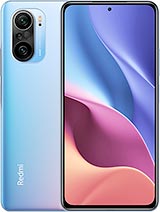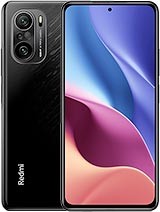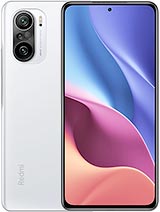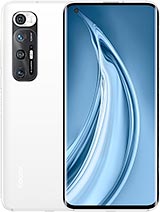Xiaomi Mi 10s vs Redmi K40 Pro Detailed Camera Comparison By Han's Tech Talk
What's up everyone welcome to another camera comparison video. Today I have this Redmi k40 pro and a Xiaomi mi 10 s. I've been doing camera comparison with Redmi k40 pro for a while. Now I have done three other camera comparison: videos with Redmi k40 pro. I am doing a Redmi k40 pro and Redmi k30 pro camera comparison. I was actually waiting for the update on Redmi k40 pro, so I got the update I mean I got the beta update on Redmi k40 pro for camera improvement and that's the reason why I was delaying my camera comparison between Redmi k40, pro and Redmi k30 pro okay.
This video is all about a Redmi k40 pro and a Xiaomi mi 10s check carefully. Where do I look better check carefully? Which microphone is working better and let me know which one is working better. If you end up liking this video, then please don't forget to click on the like button, and please subscribe to this channel. Well, it's time to flip to rear cameras. I know this is unusual for me, but I wanted to start with something that amazed me.
K40 pro got a better soc with triple ISP, and even after that, Xiaomi mi 10s has the same color grading, if not better than k40 pro, when a lot of colors needed to get reproduced. Most of the Xiaomi smartphones fails to maintain the color curve through the image, but here both of these budget devices did well, especially if you check RGB of Xiaomi mi 10s, then it has more natural and correct color rendition. K40 pro also does well, but there are two issues: one is saturation and another is a bit of warm tone. This is my third camera comparison of Redmi k40 pro, and this is a trend of Redmi k40 pro that it saturates, the colors and color temperature. Almost all the time stays a bit warm.
I must mention that Xiaomi mi 10s on the right has wider ultrawide, for, 123 degree and Redmi k40 pro ultrawide for is 119 degree. Dynamic range is also better on Xiaomi, mi, 10s and truly k40 pro has one of the worst dynamic range among all the snapdragon 888 based smartphones. I really don't understand why almost all the budget smartphones comes with a smaller ultrawide sensor, because ultrawide shots actually needs to grab and process more textures and data. Redmi k40 pro comes with the 8 megapixel sensor and Xiaomi mi 10 has got a 13 megapixel sensor, underneath ultrawide lens, and truly I don't see much of a difference in details and textures. It's almost the same, sometimes k40 pro and sometimes Xiaomi meeting has processed a bit more details and textures exposure and highlights also doesn't have any consistency.
It jumps back and forth between these two smartphones overall exposure is truly poor in ultra-wide mode. I think, depending on personal preference, both of these two smartphones ultrawide performance is okay. However, I would choose Xiaomi mittens due to a bit better color grading and details once again. K40 pro is also good. If you need a bit punchier and brighter image.
Okay, you may have been waiting for this. I mean comparison between photos taken with the main sensors of these two smartphones. All of these pictures were taken on auto mode and AI enabled and auto HDR. Of course, both of these have promotes. So if you have the time to dial in and switch between options to get a professional shot of your choice, then you can, but most of the general users uses auto mode, and I feel like this represents true pros and cons of the smartphones 108 megapixel sensor on Xiaomi mi 10s versus 64 megapixel sensor on Redmi k40 pro this number game and performance is not the same thing in real life.
The main difference is in white balance, and before you make any judgment meet next color temperature is actually neither warm nor cool. It's on the perfect line, on the other hand, k40 pro rendered colors with a bit of saturation, which makes things punchier and lucrative and along with good exposure, the whole image stands out. It's more like social media ready before we move forward. I want you to know and understand that color grading is pretty similar under bright daylight or in any good lighting condition. It doesn't matter whether you take a full resolution image or a pixel bin image.
Actually, there are a few defining factors that makes the differences like white balance. Mid-Tones shadows and details are not always the same. These actually jumps back and forth between these two smartphones, but most of the time it's better on Xiaomi, mi 10s a lot depends on ambience and surrounding colors, especially when AI is enabled and surprisingly meeting us with snapdragon 870 and weaker ISP processed things better than Redmi k40 pro. I know a lot depends on personal preference. I feel Redmi k40 pro white balance is a bit unusual.
It doesn't look attractive to me, but I also know a lot of people would like this now. The most important part for me is details and shadows, because, while editing, you cannot add details in terms of details wow, why am I not surprised Xiaomi mi 10s is well ahead. What do you think about this? Are you surprised, don't forget to make a comment, and let me know, let's switch to portrait mode, both Xiaomi mi, 10s and Redmi k40 pro have to use their main sensors to grab the portrait shots? Yes, there is a 2 megapixel depth sensor on Xiaomi mi 10s, which I really think is an unnecessary thing, and a marketing gimmick cause think carefully why Xiaomi, mi, 11 or Redmi k40 pro doesn't need a depth sensor, because these smartphones uses their ultrawide sensor to calculate depth. Xiaomi just wanted to increase the number of sensors in rear camera setup to get attention once again, it is not surprising to see edge detection and both effect is better on Redmi k40 pro. I don't see any better effect of that dedicated depth sensor on Xiaomi mi 10s, but I'm surprised to see that overall portrait photos are pretty similar.
Yes, if you have been watching this video from the beginning, then you already know that white balance on Redmi k40 pro is a bit warm. But here I see it randomly changes based on lighting condition and surrounding colors. Also, saturation issue is not that heavy in portrait mode, skin, smoothing beauty effect of Xiaomi on both of these two smartphones makes things a bit soft, but look at the hair. I can see more details and textures on the images produced by Xiaomi mi 10s poser is almost pretty good in both smartphones, specially under bright daylight, but tonal contrast is obviously better on mutant s. I have found that usually most of the time people don't add indoor low light photos in camera comparison, they go through daylight photos and nighttime photos.
But, as I have found something interesting in performance, I wanted to share these photos with you straight forward. We don't even need to crop in to see that there are differences in white balance, color grading, contrast, ratio and brightness. Before you start, judging color grading is very close to reality. On Xiaomi mi 10 s yeah, there is a difference in mid-tones and shadow details. Meteor has sometimes produced images with a bit more details and processed more textures, but it's nothing rustic, and you wouldn't even notice it if you do not compare side by side, actually k40 pro continued to reproduce photos with warm color temperature and saturation and that really ruins the whole image.
Also, there is another issue, like almost all other Xiaomi and Redmi smartphones, both k40 pro and Xiaomi. Mi 10s failed to detect well-lit areas failed to manage contrast, ratio and sometimes that leads to underexposed photos. Yeah me, tennis does offer brighter and punchier image, but sometimes highlights and shadows are higher than usual and sometimes the whole image drips a bit from reality. Also, background gets a bit exposed. I am actually not nitpicking.
These things are almost visible at a glance, but if you really want to do some pixel peeping, then okay, here you can see drastic difference in details, textures and sharpness. No, these are not night mode photos. These are outdoor low light photos and no matter whether you take an ultrawide shot or a main sensor photo. The results are the same. Xiaomi's mi 10 is continued to produce better true to life color, but surprisingly, k40 pro exposure and contrast ratio seems a lot better than Xiaomi mi 10s.
If you check carefully, then you can see one of these two smartphones processed, more textures got more shadow details which one actually is better. Did you expect this type of drastic difference? This is different. These are night mode photos, and before you do any judgment, yes, the lights at the background are changing with time, and that makes this more difficult to process. I have intentionally chosen this place. Don't get caught in the middle of color temperature and saturation in night mode for sure.
Xiaomi meeting is increased, saturation highlights and shadows and yeah that actually blown the background a bit. It's not totally overexposed because you can see exposure on subject is perfect. Do I have to mention once again Redmi k40 profile to neutralize white balance? If you can ignore that, then k40 pro actually grabbed more details and processed more textures, I prefer a good balance between noise, sharpness highlights and textures. Yes, none of these two smartphones are as good as any other flagships, but I think Redmi k40 pro seems a bit better, because once a photo is grabbed, you can edit white balance and colors even shadows can be increased, but details and textures cannot be added. I know you may not, like my preference, you may choose meet and s photos.
Ok, I totally respect your preference now I will leave these two images for you check and let me know which one is better moving on to the selfie camera and there isn't any drastic difference in performance. Xiaomi's mi 10 has continued to produce photos with more details and textures, while Redmi k40 pro applied a bit heavier skin, smoothing beauty effect, color rendition and skin tone is better on me, 10s in good lighting condition or in bright daylight. Both of these two generated good selfie images, but under low light, both struggled a bit. If we have to nitpick, then yeah meekness has more textures and there are more shadow details time for selfie portrait yeah. Even if you turn it off, skin smoothing beauty effect gets heavier.
I am actually happy to see how both of these two budget flagship smartphones produces good selfie, portraits in low light in terms of edge detection, separation line blend and details. Both are pretty similar, but this newer smartphone, I mean this mi 10s has a bit better bulky effect and also managed to get better edge detection. Okay, these are front camera videos, and I'm not surprised to see that both of these selfie sensors got some kind of stabilization before meet an ultra Xiaomi. Never provided good stabilization on front camera anyway. Color grading and dynamic range is somehow better on Xiaomi mi 10s, and it looks a bit better.
Actually, what surprised me is details and textures k40 pro and meekness. Both grabbed similar type of details- I mean amount of textures processed is similar, but actually this isn't what I have expected. Okay, these clips were recorded at 4k 30 frames per second, I think Xiaomi mi 10 has produced this video with better white balance in terms of details, sharpness and color rendition. I would go with me 10 s. What do you think? Do you agree? If you don't know yet, then yes, Xiaomi, me 10 has got is on main sensor and in 4k is helps a lot.
K40 pro only got as and other than occasional g trainers. Stabilization actually works fine. What do you think about these 4k eclipse? What is important for you, color grading, details or stabilization? Okay, it's time to wrap up, and the truth is Redmi. K40 pro did good, but not as good as what we would like. Please comment and let me know what you think: okay, if you have liked this video, then please don't forget to click on the like button, and please subscribe to this channel and share this video with your friends and family.
This must be faith so lost here.
Source : Han's Tech Talk




























